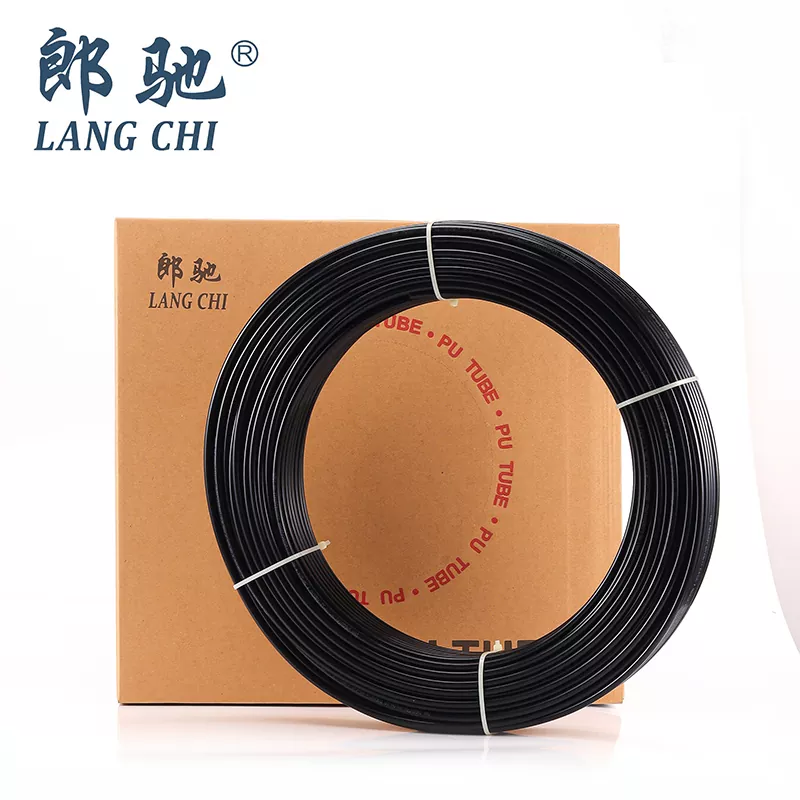
- English
- Español
- Português
- русский
- Français
- 日本語
- Deutsch
- tiếng Việt
- Italiano
- Nederlands
- ภาษาไทย
- Polski
- 한국어
- Svenska
- magyar
- Malay
- বাংলা ভাষার
- Dansk
- Suomi
- हिन्दी
- Pilipino
- Türkçe
- Gaeilge
- العربية
- Indonesia
- Norsk
- تمل
- český
- ελληνικά
- український
- Javanese
- فارسی
- தமிழ்
- తెలుగు
- नेपाली
- Burmese
- български
- ລາວ
- Latine
- Қазақша
- Euskal
- Azərbaycan
- Slovenský jazyk
- Македонски
- Lietuvos
- Eesti Keel
- Română
- Slovenski
- मराठी
- Srpski језик
How do PU tubes compare to PVC tubes in performance?
2024-11-05
Polyurethane (PU) tubes and Polyvinyl Chloride (PVC) tubes are both commonly used materials for tubing in a wide range of industries, including manufacturing, automotive, fluid transfer, and electrical applications. While both types of tubes serve similar purposes, they have distinct differences in performance characteristics, making them suitable for different applications. Here’s a comparison of PU tubes vs. PVC tubes in terms of performance:

1. Flexibility
- PU Tubes: Polyurethane tubes are known for their high flexibility. They can bend easily without kinking, making them ideal for applications that require tight bends or those that involve frequent movement (like robotics, pneumatic systems, or dynamic applications).
- PVC Tubes: PVC tubes, while somewhat flexible, are generally less flexible than PU tubes. They can become brittle over time, especially under exposure to extreme temperatures or UV radiation. PVC tubes can also kink under pressure if not properly supported.
Winner: PU Tubes due to superior flexibility, especially in dynamic or tight-bending applications.
2. Durability and Abrasion Resistance
- PU Tubes: Polyurethane tubes are known for their excellent abrasion resistance, making them suitable for environments where the tube will experience wear from contact with rough surfaces, dirt, or other abrasive materials. They are also impact-resistant, which helps them perform well in rugged, high-impact environments.
- PVC Tubes: While PVC tubes have good chemical resistance, they are less resistant to abrasion compared to PU tubes. Over time, PVC can suffer from surface degradation, particularly in high-wear environments or when exposed to sharp edges or abrasive materials.
Winner: PU Tubes for superior abrasion and impact resistance.
3. Chemical Resistance
- PU Tubes: Polyurethane tubes have good chemical resistance, though they can be affected by exposure to certain chemicals, oils, and solvents. However, they generally perform well in environments where they are exposed to mild acids, oils, and hydrocarbons.
- PVC Tubes: PVC tubes exhibit excellent chemical resistance, particularly to acids, alkalis, and salts. They are often chosen for applications involving aggressive chemicals, including those found in the food, beverage, and pharmaceutical industries. However, PVC’s resistance to oil and some organic solvents may not be as high as PU's.
Winner: PVC Tubes for better overall chemical resistance in more aggressive chemical environments.
4. Temperature Resistance
- PU Tubes: Polyurethane tubes generally have a wide operating temperature range, often from -40°C to 80°C (-40°F to 176°F), and in some cases, they can handle temperatures as high as 120°C (248°F). However, at higher temperatures, PU tubes may lose some of their flexibility and become more prone to damage.
- PVC Tubes: PVC tubes have a narrower temperature tolerance, typically ranging from -10°C to 60°C (14°F to 140°F). At temperatures beyond this range, PVC becomes more rigid and may crack or degrade. It also tends to become brittle at very low temperatures.
Winner: PU Tubes for better performance in extreme temperature environments.
5. Pressure Resistance
- PU Tubes: Polyurethane tubes have high tensile strength, which makes them well-suited for applications involving higher pressure. They are typically more resistant to bursting or expanding under pressure, especially in dynamic systems (such as pneumatic applications).
- PVC Tubes: PVC tubes are generally strong and pressure-resistant, but they are not as resilient under high pressure or fluctuating pressure conditions as PU tubes. They tend to be better suited for low to medium-pressure applications.
Winner: PU Tubes for higher pressure resistance and greater durability under fluctuating conditions.
6. UV and Weather Resistance
- PU Tubes: While polyurethane tubes offer good weather resistance, they can degrade with prolonged exposure to UV rays and outdoor environments, particularly if they are not UV-stabilized. The surface may become brittle over time.
- PVC Tubes: PVC tubes have poor UV resistance unless they are specifically treated or reinforced with additives. Without protection, UV exposure can cause PVC tubes to become brittle and crack more quickly than PU tubes.
Winner: PU Tubes (generally superior UV and weather resistance compared to untreated PVC).
7. Weight
- PU Tubes: Polyurethane tubes are typically lighter in weight than PVC tubes, making them ideal for applications where minimizing weight is important, such as in automotive or aerospace industries.
- PVC Tubes: PVC tubes are generally heavier than PU tubes, which may be a disadvantage in applications where lightweight components are essential.
Winner: PU Tubes for lighter weight.
8. Cost
- PU Tubes: Polyurethane tubes are generally more expensive than PVC tubes due to their superior performance characteristics (flexibility, abrasion resistance, etc.). The higher cost is often justified by the long-term durability and performance in demanding applications.
- PVC Tubes: PVC tubes are generally less expensive and provide a cost-effective solution for applications that don’t require the superior flexibility or wear resistance of polyurethane. PVC is a more economical choice for basic applications.
Winner: PVC Tubes for cost-effectiveness in non-demanding environments.
9. Environmental Impact
- PU Tubes: Polyurethane is not as easily recyclable as PVC. However, PU can be manufactured to be more environmentally friendly, with bio-based polyurethane options available.
- PVC Tubes: PVC is more commonly recycled than polyurethane, but it has environmental concerns due to the presence of chlorine in its composition and the potential release of harmful substances when it is burned.
Winner: PVC Tubes are more easily recyclable, but both materials have environmental considerations.
Conclusion
The choice between PU tubes and PVC tubes depends on the specific requirements of the application:
- Choose PU tubes if you need high flexibility, abrasion resistance, impact resistance, and better performance in extreme temperatures or high-pressure environments. They are ideal for dynamic applications where the tube needs to withstand wear and frequent movement, like in pneumatic systems or automotive applications.
- Choose PVC tubes if you need a cost-effective solution with excellent chemical resistance and don’t require as much flexibility or temperature resistance. PVC tubes are perfect for static applications, fluid transfer, or systems where UV and weather resistance is not a critical factor.
Each material excels in different environments, and selecting the right one will ensure optimal performance for your tubing needs.
LANG CHI is a professional PU tube manufacturer and supplier in China, as well as a high-tech enterprise integrating research and development, production, sales, and international trade.



